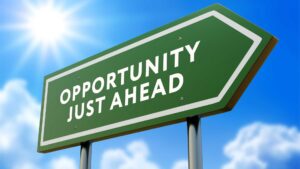A conference building a better workforce reminds us what matters most
Lining the halls of the Georgia Aquarium in downtown Atlanta gathered some of the world’s leading executives who, to put it simply, are in the people business. They busily moved about the hallways and in and out of the main conference room; their movements seemed jarring compared to the graceful, poised, and harmonious movements of the myriad species that called the Aquarium home. While the only thing separating us humans from those mammals was two feet of highly pressurized glass, I observed that finding our own authentic movements, connecting effortlessly and candidly, and respecting space and differences among many other types was not as easy as the animals on the opposite side of the glass made it appear. The irony was undeniable, but the opportunity is not only possible, it’s worth fighting for.
These leaders gathered for a one-day event to discuss, ideate, and connect with others to create a healthier workforce in its most comprehensive sense: physically, emotionally, mentally, and characterized with deep purpose and a sense of contribution. With scores of workers depleted from overwork, an ever-rallying cry to bring more of ourselves to work, and the realities of unconscious bias that pervade our workforce, creating a workplace that works in 2020 is a significant challenge. The From Day1 conference is not only well intentioned, but does a great job of cutting through some of these issues in real and authentic ways that give promise to an unrelenting commitment to make people’s lives better, more equitable, and more satisfying, both at work and at home.
With topics ranging from organizations’ commitments to their communities, removing bias from our systems, creating healthier and more positive work environments (including staggering statistics on burnout and deteriorating mental health among employees), creating social impact, understanding and establishing organizational empathy, and fostering critical equality conversations, the subject matter all speak to a broader theme: while it may be a long road to achieving these goals, the sense of urgency, commitment, and opportunity to tackle these subjects directly is what will make it possible. As Tim Mapes from Delta eloquently shared with an aviation metaphor, “what you push against lifts you up.” It’s only through embracing the reality of the human challenges at work that we can advance as a society and find a solution that does, in fact, lift us all.
As I mentioned, the upside here is vast and unlimited. The downside, however, is riddled with consequences, financial and human, that are worth acknowledging, accepting, and then resolving by coming together to tackle them and create real change. Consider that today, here in 2020, we are at the highest levels of burnout in our history, we continue to lack sweeping diversity in our boardrooms and in our C-suites, the best opportunities still fall mostly to those with means, equal pay is still an aspiration, and the Edelman Trust Barometer indicates that corporations in general are not winning the long-game of building consumer loyalty so essential to perpetuating their brands.
While there certainly is a lot of lack, what is in abundance is the human ingenuity, resources, intellectual capital, the justness and passion of talented and committed individuals and leaders, and frankly, the information, tools, and motivation to make real progress on our toughest challenges. In a world that is moving so fast, our default is to tick off things that may not be so challenging, but we have to ask ourselves if that leaves us feeling satisfied at the end of our days, weeks, years, and careers. This means our problem isn’t information or a lack of resources; what it really means is we’re falling short on delivering, and we must own that if we’re going to make significant progress.
Personally, I left the conference feeling energized by the people I met, the genuineness and authenticity of their personal and professional pursuits, and their commitment to their organizations despite their challenges of keeping up with and even trying to stay ahead of the pace of change. Here are a few of my takeaways of how we can make real change:
- Pay real attention to what your employees want – Delta’s partnership with Habitat for Humanity and BlueBoard’s commitment to organizational empathy have paid huge dividends for customers and employees alike.
- Be bold, clear, and decisive – values work is a process, not an event. Commit, recommit, and use values as your standard bearer to make tough decisions and then tell those stories.
- What’s your business case for diversity and inclusion? If your leadership can’t explain it, you can’t launch or maximize the effort.
- Tap new talent potential outside of your known, familiar, comfortable circle – accelerate readiness by giving people real chances and stretching their comfort zone.
- Mental health is a medical condition, not a personal failure – mental health and EAP stigma is real and is costing companies billions. Present fresh ideas to rebrand EAP, offer and encourage resources through your leaders, demonstrate your own areas where you need help, and make it culturally safe to ask for help.
- Display and open up your values on your front door in every way possible – values are the gateway to attracting and winnowing candidates for greater long-term retention and engagement.
- Provide real training to generate critical conversations about our differences and equality. Discover the power of allyship, and empower all employees with the tools to advocate for themselves and others.
- When in doubt on how best to focus, mobilize, and inspire your workforce, focus on work/life integration, human connectedness, a sense of purpose and contribution, and provide room to grow for all.
As I left the Aquarium, I paused for some reflection in front of the thick glass and observed numerous species including whale sharks, squadrons of stingrays, groupers so large I didn’t realize they were groupers, and of course, sharks of all sizes. I felt at peace and also amazed by what made all of this possible. It was the result of humans leveraging resources of financial, time, energy, intellect, and a huge sense of purpose to create an almost impossible reality: the Aquarium took only an astounding 27 months to build.
Creating a workplace that works in the context of a life that works is a bold vision and it’s one that many organizations are now committed to. With the help of conferences like From Day1, we may just find ourselves living in greater harmony, deepening our connections, removing some of our biases, and finding greater health and purpose in what we do every day. And, the nice thing is that we can do it all on land.



